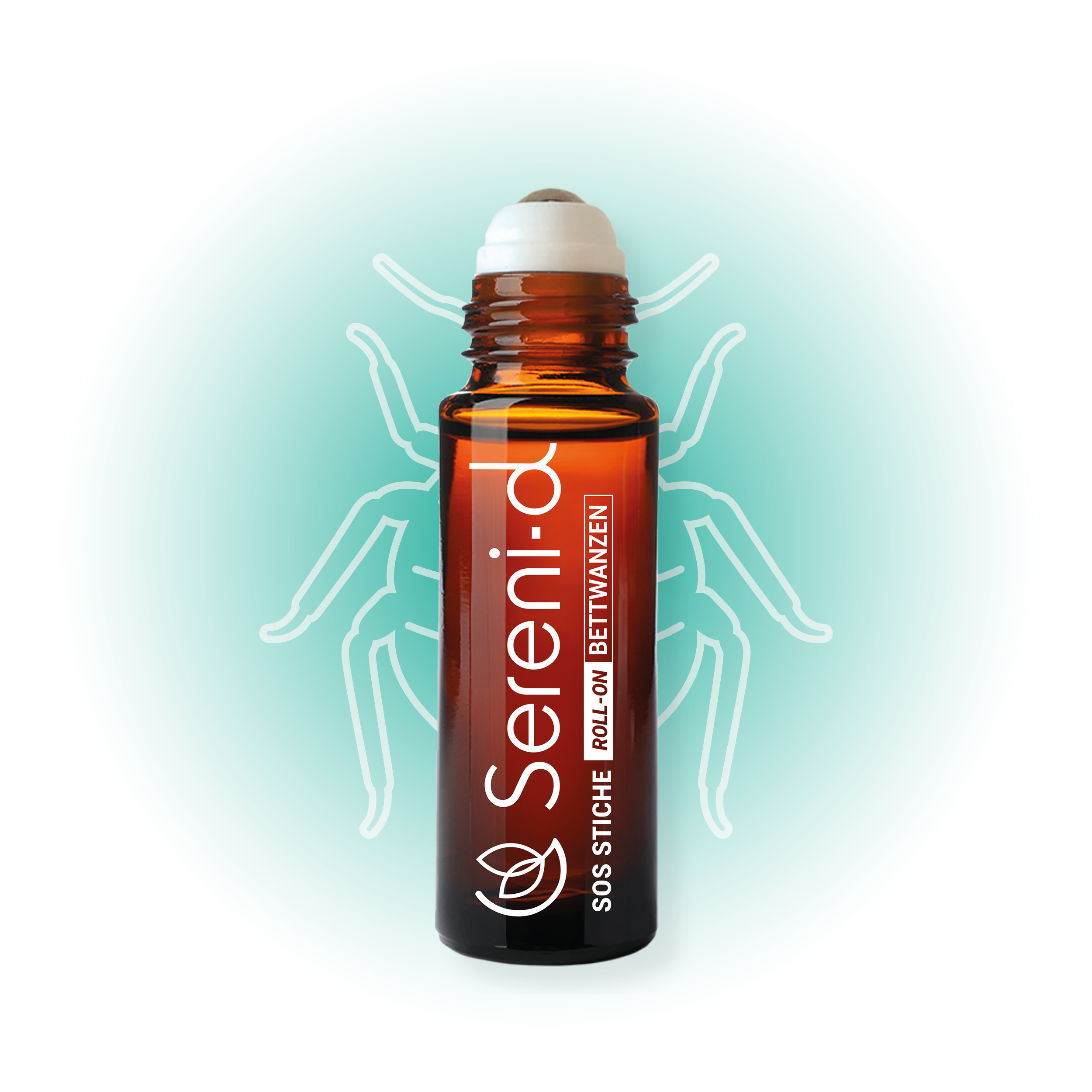The arrival of bedbugs in your home is often insidious. Their bites can point to the beginning of an infestation, which is why it’s so important to know how to recognise bedbug bites and start treating it quickly to avoid infestation.
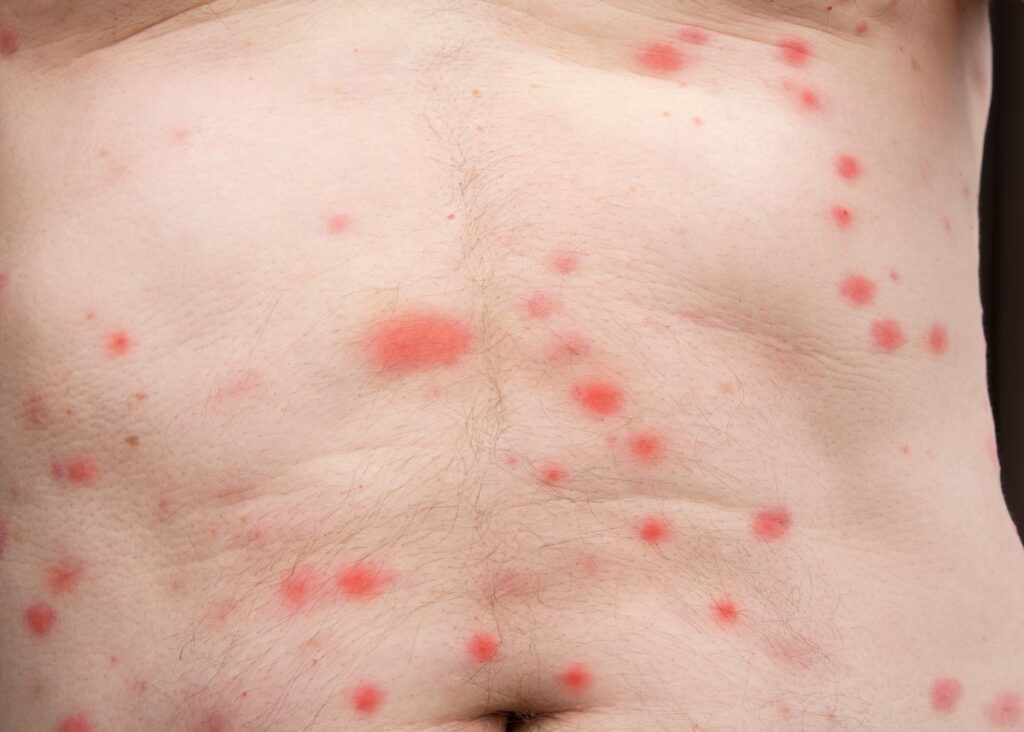
How to recognise a bedbug bite
Identifying a bedbug bite is very important. Indeed, the sooner you can spot a bedbug bite, the sooner you can start treating it to avoid a massive infestation of these pests.
What does a bedbug bite look like?
Bedbug bites can be recognised by red spots that are usually grouped on a small area of skin, often in a line of 1 to 5 spots. In fact, bedbugs can bite several times in a row. They need blood to feed themselves. At the very beginning of an infestation, it’s possible to have a single bedbug bite or a few isolated bites.
When bedbugs bite, the spot is flat, but it can quickly cause the skin to swell and itch. The appearance of a bedbug bite also has a red haemorrhagic spot in the centre of the spot . The spot forms a red mark ranging from 5mm to 2cm, depending on the individual’s reaction.
Another indicator of bedbug spots: itching. Itching generally appears as soon as you wake up and can last from 3 to 10 days, depending on the individual. Finally, here’s an overview of bedbug bites in some photos, so you can easily distinguish them from any other insect.
How can you tell the difference between bedbug bites and those of other insects?
– Difference between mosquito bites and bedbugs
Unlike bedbug bites, which are usually clustered in one area of the body, mosquito bites can be found anywhere the insects have access to your skin. Bedbugs generally bite at night when the person is asleep (as they don’t like light), whereas mosquitoes bite day and night. What’s more, bedbugs are present all year round, unlike mosquitoes (which are more prevalent in summer).
– Difference between bedbug and flea bites
The main distinction between a bedbug bite and a flea bite is the sensation of pain. The bedbug injects an anaesthetic when it bites, so there’s no pain or itching at the very moment of the bite. Conversely; when you’re bitten by a flea, you immediately feel the sting. On the other hand, flea spots usually appear on the lower part of the body, such as the legs and feet.
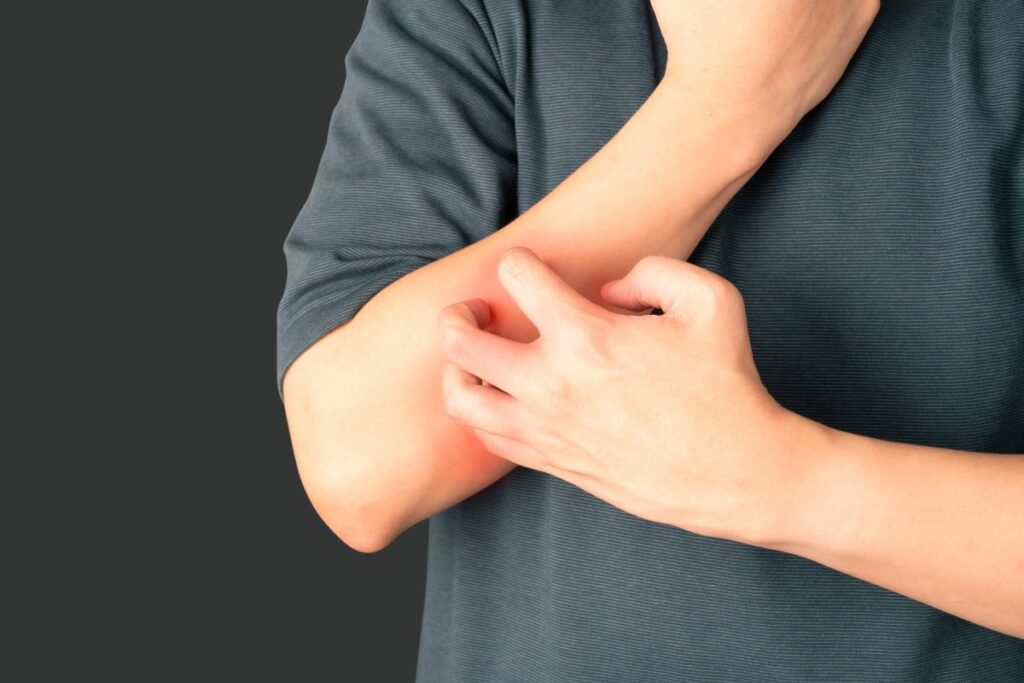
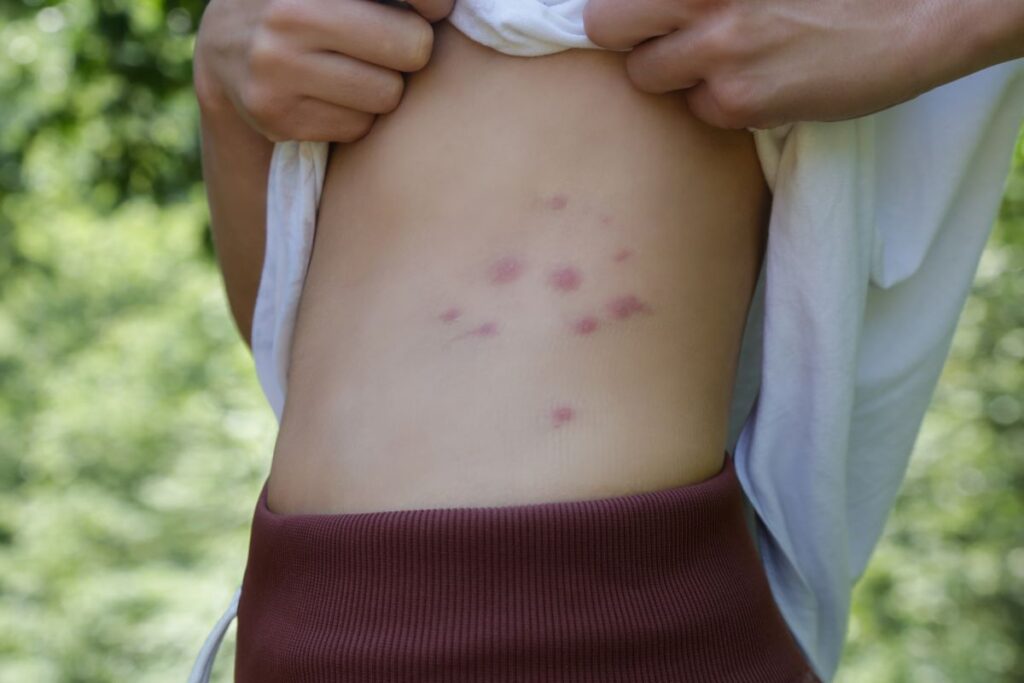
– Difference between bedbug bites and chigger bites
The bite of a chigger causes a skin rash in the form of small patches 3 mm in diameter, smaller than a bedbug bite. These tiny insects are virtually invisible to the naked eye, and are usually found near bodies of water.
– Difference between bedbug and spider bites
In general, a spider bite can be distinguished by two red dots close together, representing the bite. Unlike bedbug bites, spider bites are isolated. On the other hand, a spider’s bite is generally larger than that of a bedbug.
Where do bedbugs bite?
Bedbugs bite on any part of the body. You can be stung on any exposed part of the body, and only in very rare cases on the face. For people who sleep in their pyjamas, bedbug bites can only be found on the feet, ankles, hands and nape of the neck.
Do bedbug bites itch?
Most people bitten by bedbugs experience varying degrees of itching, depending on individual sensitivity. At the very moment of the bite, there is no sensation of pain or tingling. The bedbug injects an anaesthetic before sucking out the blood, making the bite painless. On the other hand, the itching starts one to two hours later, with red marks.
Itching can be very intense and persistent, depending on the individual, and can lead to hives or an allergic reaction. If your skin reacts strongly to bedbug bites, with the appearance of blisters, sores or a sensation of intense heat in the bitten area, you should consult a doctor.
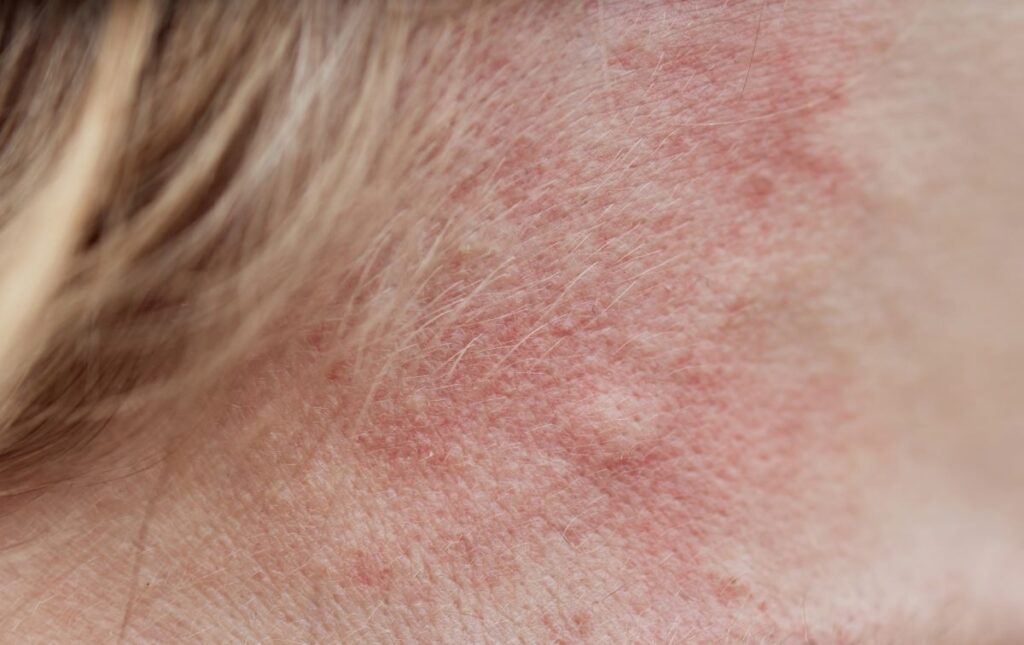
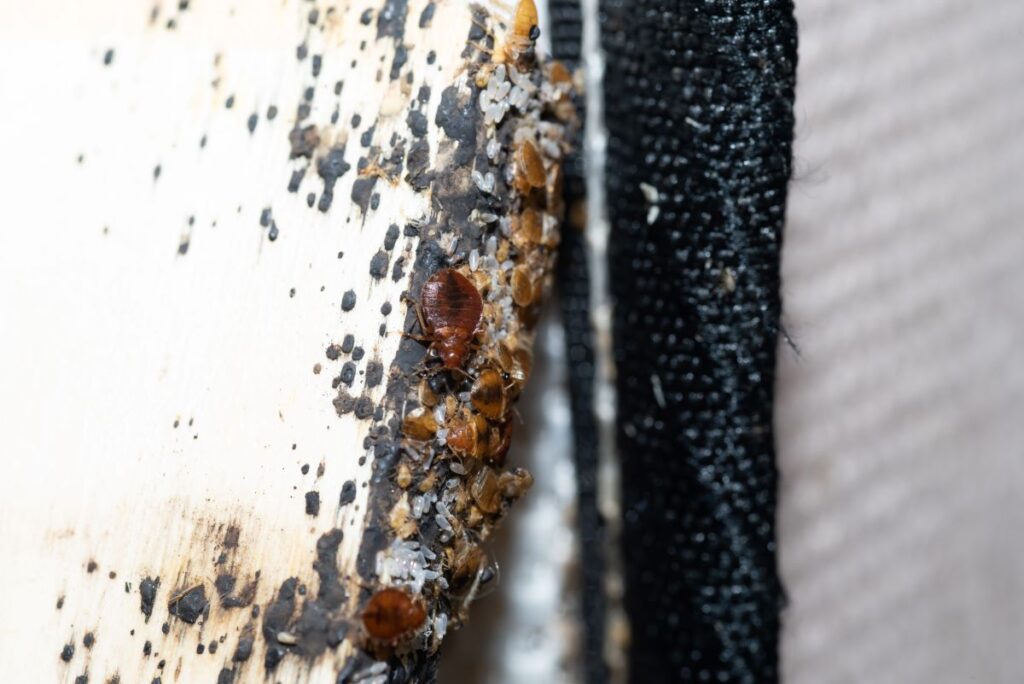
How long does a bedbug bite itch?
The itching caused by a bedbug bite can last between 3 and 5 days, sometimes up to 10 days. If you scratch your spots intensely, you risk leaving scars.
Other signs of bedbugs
If you still have doubts about identifying bedbug bites and their presence in your home, here are some other indicators:
- Black spots on bedding, walls or around beds. These little black spots are their excrement, which they leave behind.
- Traces of blood on sheets. While you’re asleep, you may crush some bedbugs that are gorged with blood.
- Presence of eggs, larvae or adult bugs, which generally hide in mattress seams, under bed bases, behind bedside tables, near the skirting boards or in any dark corner of the room.
Treating bedbug bites
Treating bedbug bites is essential to relieve symptoms and prevent any complications.
How to treat and relieve a bedbug bite?
When you notice bites, start by washing the affected area with warm water and mild soap. Be sure not to rub vigorously, as this may aggravate the itching. After washing, disinfect the spots with an antiseptic to prevent infection.
To soothe itching, Sereni-d has developed Roll-On Apaisant, which acts both preventively and curatively against bedbug bites. Formulated with essential oils with soothing, antiseptic, anti-inflammatory and healing properties, this treatment calms itching and speeds up healing. Apply the Roll-On directly to the bitten area for immediate relief.
Also, avoid scratching, which can lead to skin lesions and a secondary infection potentially.
Finally, bedbug bites can also be relieved with a variety of home remedies. Please note, however, that their effectiveness varies from person to person, and that they do not treat the underlying problem of bedbug infestation.
100% natural solution
Anti-Bite Roll-On
Sereni-d Roll-On Anti-Bite immediately relieves itching and repels bedbugs thanks to its essential oils with repellent properties.
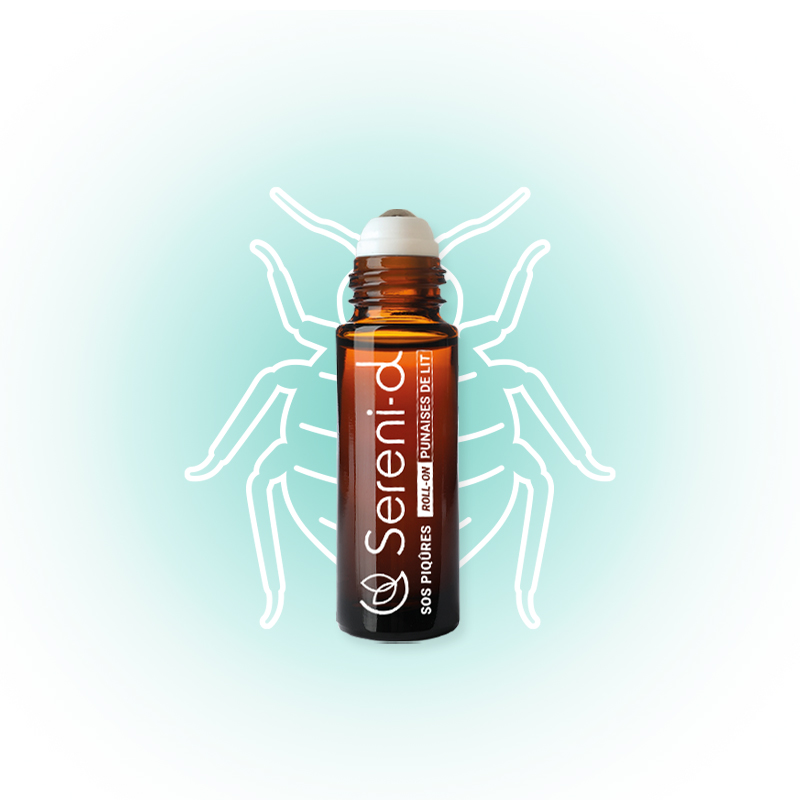
- Preventive and curative action
- Immediate and long-lasting effectiveness
- Antiseptic, soothing and regenerative properties
- Alcohol- and preservative-free
€14.90

What should I do if I have an allergic reaction to bedbug bites?
Bedbug bites can cause allergic reactions. These manifest as widespread skin rashes, severe swelling and itching, or breathing difficulties.
Seek prompt medical attention to control allergic symptoms. The doctor may prescribe antihistamines or corticosteroids to calm the inflammation.
On the other hand, maintain rigorous hygiene and monitor the progress of the bites to prevent secondary infections. Increased pain, redness or heat around the bite may be signs of a bacterial infection. In this case, consult your doctor.
How can I prevent bedbug bites?
To protect you when you’re on the move (when travelling or if you think they may be some pests nearby) Sereni-d has designed the ANTI-PIQUE body repellent spray. For long-lasting, safe protection, this spray contains Geraniol extract combined with a mixture of essential and plant oils with repellent, soothing and moisturising properties.
It repels bedbugs by disrupting their olfactory receptors, guaranteeing protection for your skin. Apply to exposed areas of the body and repeat before bedtime.
Finally, be sure to complement anti-bite treatments with more comprehensive pest control methods to get rid of these pests for good.
100% natural solution
Anti-Bite repellent spray
Sereni-d Bedbug Repellent Body Spray repels bedbugs for effective protection. For spraying on uncovered areas of the body!
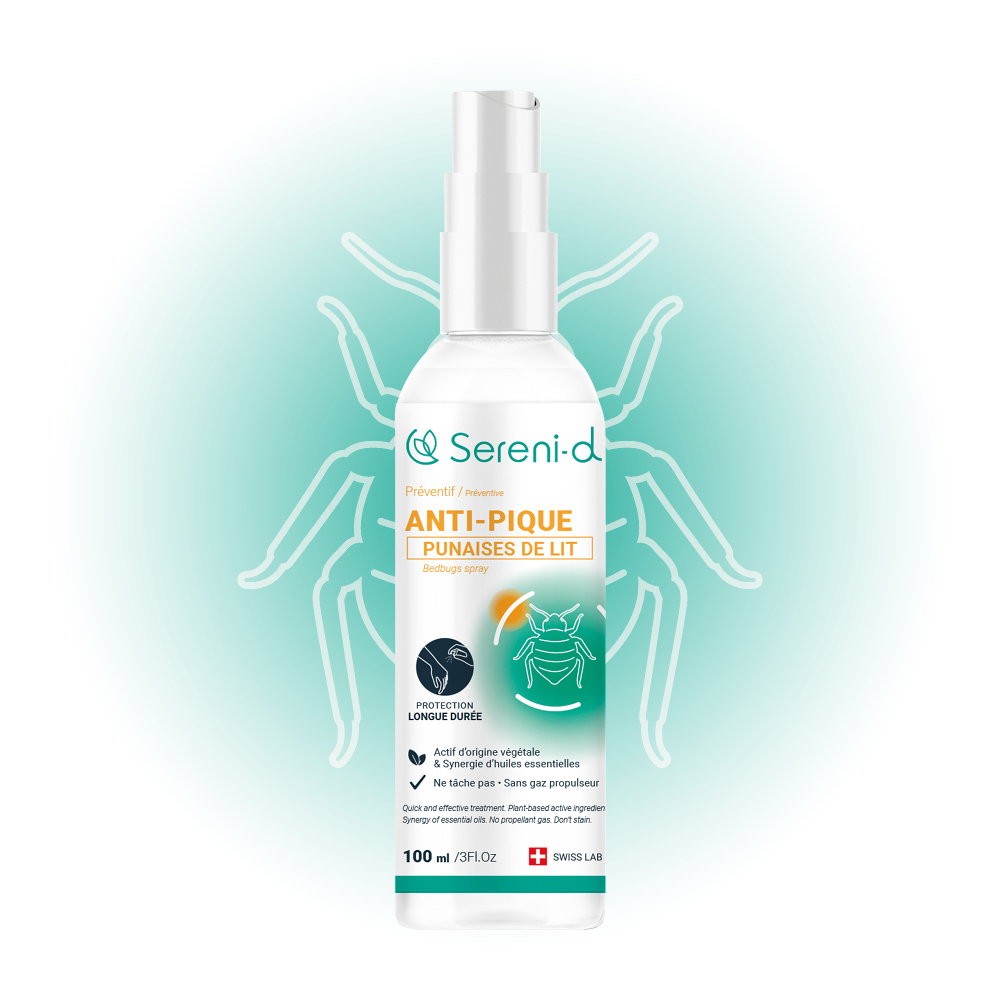
- Preventive and repellent action
- Extract of Geraniol, essential and plant-based oils
- Long-term prevention
- Ideal for travel, hiking and at home
€21.90
100% natural insecticide
SOS Anti-Bedbugs treatment
SOS Bedbug Repellent Treatment is a natural insecticide effective against bedbugs for immediate, safe and long-lasting protection.
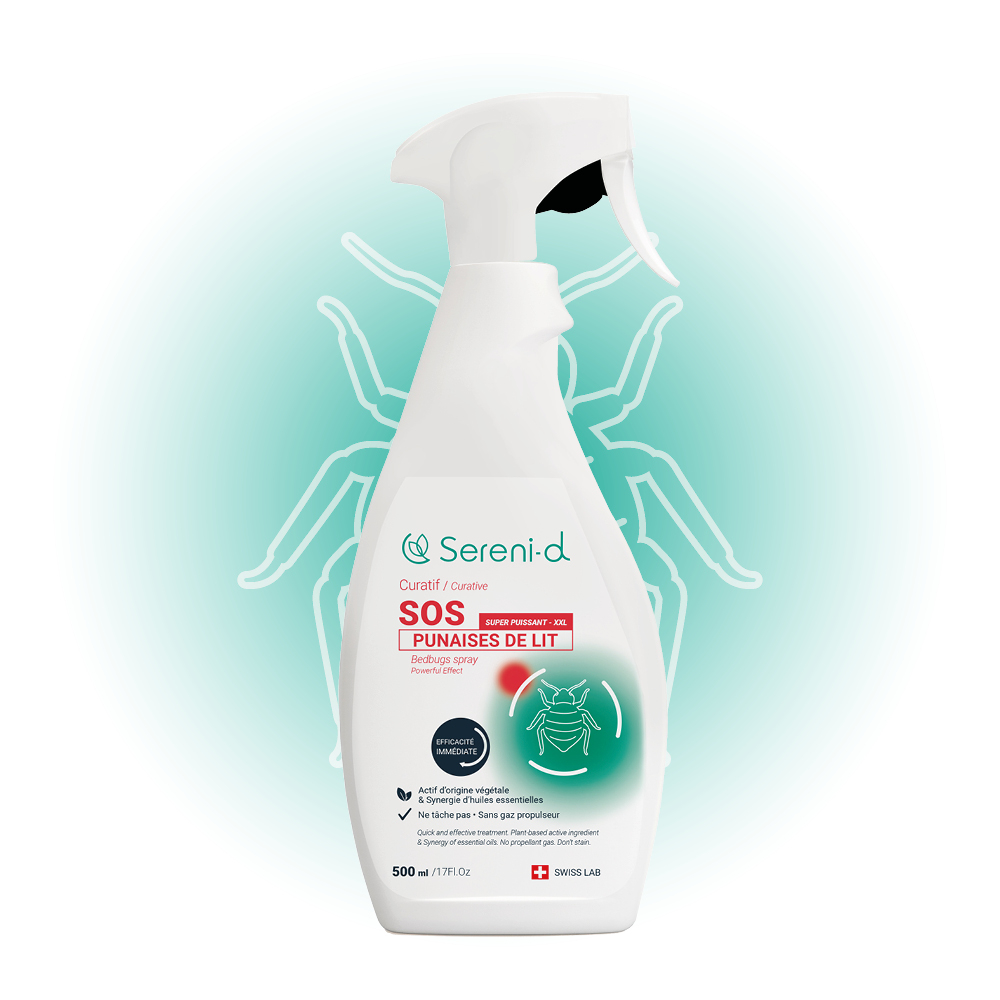
- Eliminates 100% of bedbugs
- Pyrethrum flower extract and essential oil synergy blend
- Does not stain
- Pleasant fragrance
€34.90
How do you get rid of bedbugs?
Once bedbug bites have been treated and the presence of these pests has been confirmed, it’s essential to implement the necessary measures to eradicate them. Infestation can be rapid, so it’s very important to use a combination of methods as soon as possible to get rid of it.
Treatments to eliminate bedbugs
All kinds of treatments are available to kill bedbugs, from chemical to natural, including bedbug traps and professional interventions. Find out more about all the possible treatments in our leading article.
At Sereni-d, we have chosen to develop a natural insecticide that is effective against bedbugs and safe for the occupants of infested homes. Our natural SOS Anti-bedbug treatment eliminates 100% of bedbugs thanks to a combination of plant-based pyrethrum extract and a mixture of essential oils with insecticidal properties. This spray contains NO synthetic permethrin, NO DEET, NO endocrine disruptors and NO flammable propellants, and effectively neutralises bedbugs immediately. Spray this treatment directly on bedbugs and in strategic places where they hide: bed base, slats, skirting boards, behind furniture and any other dark nooks and crannies.
Complete the bedbug treatment with meticulous cleaning
To get rid of these pests, it’s important to carry out a thorough clean of the infested area and your personal belongings.
- Start by washing the bed linen, pillows, clothing, curtains and carpets likely to be contaminated at high temperature (60°C). You can finish treating the bed linen by tumble-drying for 30 minutes to kill eggs and stubborn bedbugs.
- Then vacuum the mattress, bed base and entire infested room. Once the operation is complete, dispose of the dust bag in an airtight bag to prevent the spread of bedbugs.
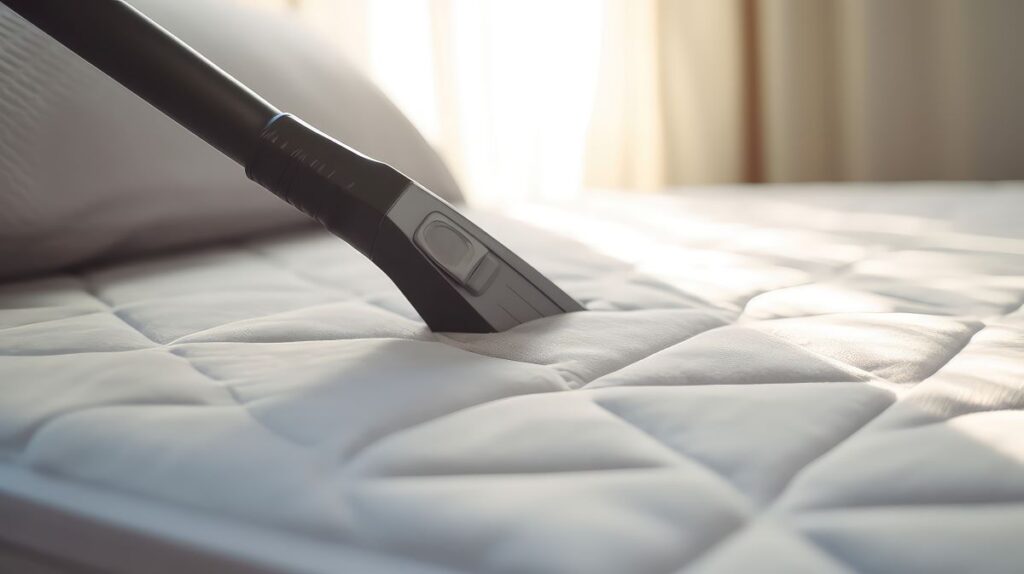
Sereni-d soothing solution
For immediate relief of itching, use Roll-On Soothing. It can be applied both as a preventive and curative measure against bedbug bites. Thanks to its essential oils with antiseptic, anti-inflammatory and healing properties, this roll-on soothes the skin and speeds up healing.
Ideal for use before and after bedbug bites!

